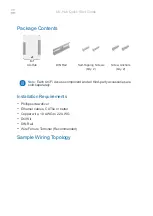
ENTEGRIS, INC.
USER GUIDE
25
INVUE INTEGRATED FLOW CONTROLLERS, MODELS NT6510, NT6520
Symptom
Possible Causes
Suggestions
6. Flow output
does not
correspond
to setpoint
for high
flow rates.
Insufficient line pressure/
insufficient pressure drop.
Verify the inlet pressure is adequate
as described in the
Operating Line
Pressure Requirements
on page 21.
Verify the pressure drop meets
the requirements according to the
Operating Pressure Drop Requirements
on page 21.
Viscosity and specific
gravity offsets.
Correct for viscosity and specific
gravity.
7. Flow rate is
not meeting
desired set-
point within
10 seconds
or longer.
The unit is receiving a set-
point signal with no fluid
flow present. The unit valve
is moved to the full-open
position. Depending upon
flow range, the unit may
require 10-15 seconds or
more to move from the full-
open position to the correct
setpoint position.
Do not send a setpoint signal to the
unit when no fluid flow is available.
(see Symptom 6)
Insufficient line pressure/
insufficient pressure drop.
Verify the inlet pressure is adequate
as described in the
Operating Pressure
Drop Requirements
on page 21.
Verify the pressure drop meets
the requirements according to the
Operating Pressure Drop Requirements
on page 21.
8. Flow output
is not res-
ponsive to
changes
in setpoint
signal.
Incorrect wiring of setpoint
signal.
Review
Wiring Diagram
on page 16.
Ensure the ground connections are
connected properly. Confirm the pres-
ence of the setpoint signal. Con firm
the unit is configured for the proper
setpoint signal (i.e. 4–20 mA, 0–5 VDC,
0–10 VDC) by reading part number on
the label.
Valve in full open position.
If the unit is plumbed
between two closed valves,
the unit may stall in the full
open position when the unit
is commanded to close.
Since a fixed volume of fluid
is incompressible, the unit
may stall when attempting to
close if upstream and down-
stream valves are closed.
Avoid conditions of simul tan eously
closed valves upstream and down-
stream of the unit. The unit can be
returned to normal operation by per-
forming a re-zero or by cycling power.
Diagnostic Guide
(continued)










































